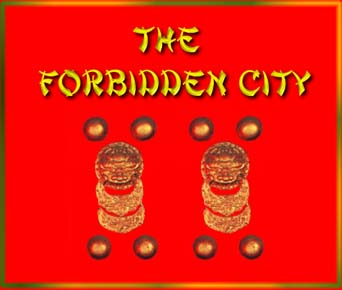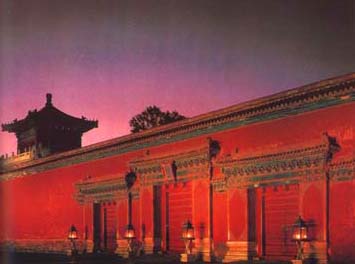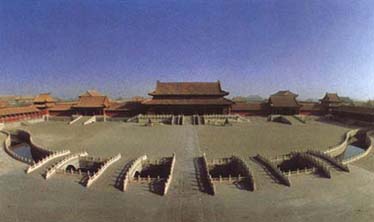

The Palace Museum, also known as the Forbidden City, was
the palace of the Ming and Qing Dynasties.
Emperors lived here over a span of more than 491 years. Constructed in the years from 1406 to 1420 and rebuild many times later, the imperial Palace covers an area of 72 hectares, with more than 9,000 building within it. Around it is a battlemented wall ten metres high, and outside the wall is a moat 50 metres wide. At each corner of the wall is a three-storeyed watchtower.The main palace buildings are divided into two parts: the outer court and the inner court.The outer court has three main halls standing on a three tiered, balustraded terrace of white marble: Taihedian (Hall of Supreme Harmony),Zhonghedian (Hall of Central Harmony) and Baohedian (Hall of Preserved Harmony). They are the places where the emperor receives high officials and conducted the administration of the empire. The inner court includes Qianqinggong (Palace of Celestial Purity), Jiaotaidian (Hall of Celestial and TerrestrialUnion),Kunninggong (Palace of Terrestrial Tranquillity).These are the places where the emperor lived and conducted day-to-day administration. On either side of the three central palaces are the twelve courtyards that were once inhabited by concubines, dowagers and maids.

The Palace Museum is the largest and most complete group of palace building existing in China today,Laid out in a strict symmetry, the buildings embody the fine tradition and unique style of ancient Chinese architectural art. With its magnificent halls and courtyards and its imperial collection of arts and antiques, the whole palace is now a museum of world importance for Chinese history,culture and art.